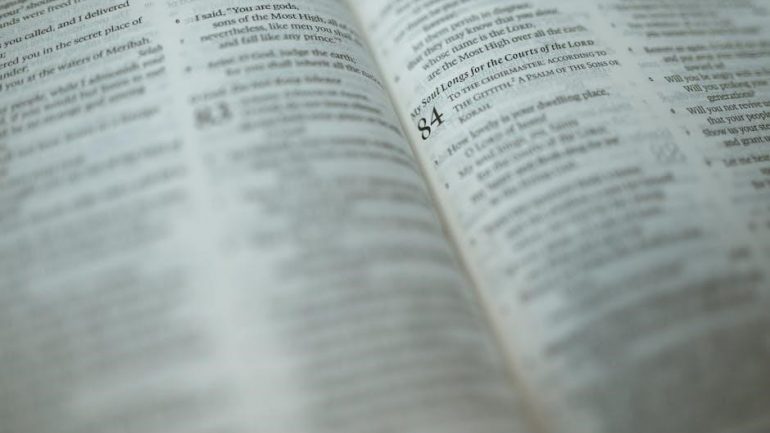The Book of Blessings⁚ A Catholic Guide to Liturgical Blessings
The Book of Blessings is a liturgical resource used in the Catholic Church for various blessings, including those for persons, objects, and special occasions․ It contains the blessings of the Roman Ritual for the Universal Church and additional proper blessings for use in the United States․ The book is a valuable resource for clergy and lay people alike, offering guidance on how to perform blessings in a variety of settings․
Introduction
The Book of Blessings, also known as the “Benedictional,” is an essential liturgical resource in the Catholic Church․ It provides a comprehensive guide to various blessings, encompassing a wide range of individuals, objects, and events․ This book serves as a practical and pastoral tool for clergy and lay faithful, enabling them to administer blessings in accordance with the Church’s liturgical tradition․ From the blessing of religious articles to the solemn anointing of the sick, the Book of Blessings offers a rich tapestry of prayers and rites for various spiritual needs and occasions․ It is an indispensable companion for those seeking to deepen their understanding of the Church’s sacramental life and the power of blessings in enriching everyday experiences․
The Book of Blessings, a product of the Catholic Church’s liturgical renewal following the Second Vatican Council, has become an integral part of Catholic practice․ This comprehensive resource encompasses blessings for individuals, objects, and significant events, offering guidance and structure for the faithful․ Its significance lies in its ability to enhance spiritual well-being, providing a framework for connecting with God’s grace and seeking His blessings in various aspects of life․ The Book of Blessings serves as a valuable tool for clergy and lay faithful, enabling them to participate actively in the sacramental life of the Church․
What is the Book of Blessings?
The Book of Blessings, formally known as the “De Benedictionibus” in Latin, is a liturgical book used in the Roman Catholic Church․ It contains a collection of blessings and rituals for various persons, objects, and occasions, as well as for official parish events․ These blessings are not sacraments, but rather sacramentals, which are signs and symbols that are instituted by the Church to prepare us to receive God’s grace and to strengthen our faith․ They are a powerful way to invoke God’s blessing upon ourselves, others, and the world around us․
The Book of Blessings is a valuable resource for clergy and lay faithful, providing guidance on how to perform blessings in a variety of settings․ It includes blessings for individuals, such as the sick, the elderly, and children, as well as blessings for objects, such as religious articles, homes, and vehicles․ It also contains blessings for special occasions, such as weddings, funerals, and anniversaries․ The Book of Blessings is a reminder of the importance of seeking God’s blessings in our lives, and it provides a framework for doing so in a meaningful and prayerful way․
History and Development
The Book of Blessings has a rich history, evolving over centuries to reflect the changing needs and practices of the Catholic Church․ Its roots can be traced back to the early Church, when blessings were a common practice, often performed by bishops and priests․ Throughout the Middle Ages, various collections of blessings were compiled, often specific to particular regions or orders․ These collections were later standardized and incorporated into the Roman Ritual, which became the official collection of liturgical books for the Roman Catholic Church․
In the wake of the Second Vatican Council (1962-1965), the Roman Ritual underwent a significant revision, leading to the publication of the first edition of the Book of Blessings in 1984․ This edition, titled “De Benedictionibus” in Latin, was a comprehensive revision of previous collections, reflecting the Council’s emphasis on the active participation of the laity in the liturgy and the importance of the vernacular language in worship․ The Book of Blessings has been translated into numerous languages, including English, and continues to be a valuable resource for Catholics around the world․
Content and Structure
The Book of Blessings is organized into various sections, each dedicated to specific categories of blessings․ It includes blessings for individuals, such as those for children, the elderly, and the sick, as well as blessings for objects, including religious articles, homes, and vehicles․ The book also contains blessings for various occasions, such as weddings, funerals, and the beginning of a new school year․ These blessings are typically framed as prayers or rituals, often involving the use of holy water, incense, or other sacramental signs․
The Book of Blessings is structured to make it easy for priests and deacons to find the appropriate blessing for a given situation․ It features a clear and concise table of contents, as well as a comprehensive index that allows users to quickly locate specific blessings by subject or keyword․ Each blessing is typically presented in a standardized format, including the opening prayer, the blessing itself, and a concluding prayer․ The book also includes instructions on how to perform the blessing properly, ensuring that the ceremony is conducted in accordance with the liturgical norms of the Catholic Church․
Blessings for Persons, Objects, and Occasions
The Book of Blessings encompasses a wide array of blessings, catering to diverse needs and circumstances․ It includes blessings for individuals, encompassing those for children, the elderly, and the sick․ These blessings are intended to provide spiritual support, comfort, and guidance during life’s various stages․ The book also features blessings for objects, such as religious articles, homes, and vehicles․ These blessings seek to sanctify these items, imbuing them with a sense of sacredness and invoking God’s protection upon them․
Beyond blessings for individuals and objects, the Book of Blessings offers a collection of blessings for various occasions․ These include blessings for weddings, funerals, and the beginning of a new school year․ These blessings are designed to mark significant life events, seeking to invoke God’s favor and guidance upon those involved․ The book also includes blessings for specific events, such as the blessing of a new home, a business, or a piece of art․ These blessings are intended to invoke God’s blessing upon these endeavors, seeking to bring success and prosperity․
Blessings in Parish Life
The Book of Blessings plays a vital role in parish life, providing a framework for incorporating blessings into various aspects of the community’s spiritual journey․ It offers a range of blessings specifically tailored for parish events, such as the blessing of a new church building, the dedication of a parish hall, or the commissioning of liturgical ministers․ These blessings are intended to sanctify these spaces and activities, fostering a deeper sense of faith and community within the parish․
The Book of Blessings also provides guidance on how to perform blessings within Mass, offering specific rites and prayers for various occasions․ This allows for the integration of blessings into the liturgical celebration, enriching the worship experience and strengthening the connection between the sacraments and daily life․ Furthermore, the book includes blessings for specific parish ministries, such as the blessing of a new catechist, the commissioning of a lector, or the installation of a parish council․ These blessings are intended to acknowledge and support the work of these individuals and groups, recognizing their contributions to the parish community․
The Book of Blessings in the United States
The Book of Blessings has been specifically adapted for use in the United States, reflecting the unique needs and cultural context of the American Catholic Church․ The National Conference of Catholic Bishops (NCCB) played a key role in translating and adapting the Roman Ritual, ensuring that the blessings were relevant and accessible to American Catholics․ The NCCB’s involvement has resulted in a version of the Book of Blessings that incorporates both the universal blessings of the Roman Ritual and additional proper blessings for use in the United States․
The Book of Blessings has been widely adopted by dioceses and parishes across the country, serving as a valuable resource for clergy and lay people alike․ Its inclusion of blessings for various occasions, objects, and persons makes it a versatile tool for enriching the spiritual life of the American Catholic community․ The Book of Blessings in the United States continues to be a vital resource for celebrating faith and fostering a deeper connection with the divine in a diverse and vibrant cultural context․
Resources and Availability
The Book of Blessings is readily available through various channels, catering to the needs of individuals and institutions․ Catholic Book Publishing, a prominent publisher of liturgical resources, offers a printed version of the Book of Blessings, ensuring its accessibility to those who prefer a physical copy․ The book’s widespread availability extends to online platforms, allowing for digital access and convenient browsing․ Online retailers such as Amazon and Barnes & Noble also offer the Book of Blessings for purchase, further expanding its reach and accessibility․
Additionally, the National Conference of Catholic Bishops (NCCB) provides resources related to the Book of Blessings, including guidelines and explanations for its proper use․ These resources are available on the NCCB website, offering valuable insights and support for those seeking to understand and utilize this liturgical resource․ The availability of both physical and digital copies, along with the supporting resources provided by the NCCB, ensures that the Book of Blessings remains a valuable and accessible tool for the Catholic community․

The Book of Blessings stands as a vital resource for the Catholic Church, offering a comprehensive collection of blessings for a wide range of individuals, objects, and occasions․ Its historical development, rooted in the Roman Ritual, reflects the Church’s long-standing tradition of invoking God’s favor and blessings upon His people․ The book’s content and structure provide clear guidance for clergy and lay faithful, enabling them to perform blessings with reverence and understanding․
The Book of Blessings serves as a valuable tool for enriching parish life, offering blessings for various events and pastoral needs․ Its availability in both print and digital formats ensures its accessibility to a wide audience․ As a testament to its enduring significance, the Book of Blessings continues to be a cherished resource for the Catholic community, fostering a spirit of devotion and gratitude within the Church․




